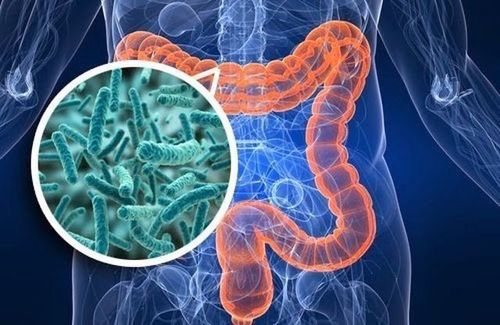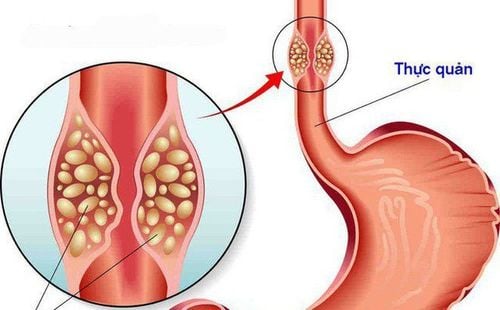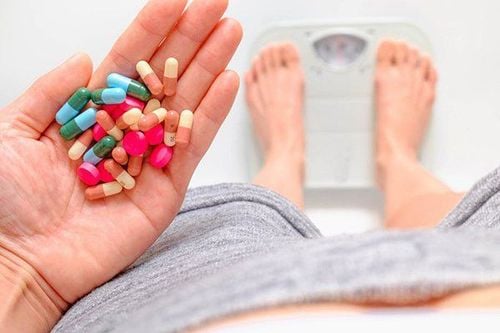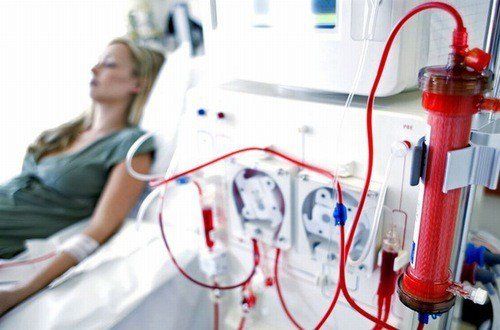This is an automatically translated article.
The article was professionally consulted with Doctor Vo Ha Bang Suong - General Internal Medicine - Department of Examination & Internal Medicine - Vinmec Phu Quoc International General Hospital.Crush syndrome or rhabdomyolysis was discovered by Bywater and Beal in 1941, following an earthquake in London. During wars, natural disasters (earthquakes, landslides, house collapses, fires,...) or serious labor accidents,... a part of the victim's body is pressed and buried. for a period of two hours or more. These injuries can lead to burial syndrome.
1. What is burial syndrome?
Burial syndrome has been described in many contexts, most commonly after earthquakes, during war, and after explosions that cause buildings to collapse. It is also seen after industrial accidents, such as those occurring in mining, and after road traffic accidents. The incidence of burial syndrome has been reported to be 2% to 15% in all trauma patients and it can be as high as 30% in earthquake victims.Injuries commonly found in victims of earthquakes, landmine disasters, explosions, terrorist attacks, local wars and other accidents. Complications arising from injuries inflicted on the victim give rise to burial syndrome.
Burial syndrome can be generalized:
"Severe systemic manifestation of trauma and ischemia involving soft tissues, mainly skeletal muscle, resulting from prolonged severe crushing. It leads to increased membrane permeability and release of potassium, enzymes, and myoglobin from within the cell.Second ischemic renal dysfunction, hypotension, and decreased renal perfusion leading to tubular necrosis acute renal failure and uremia."
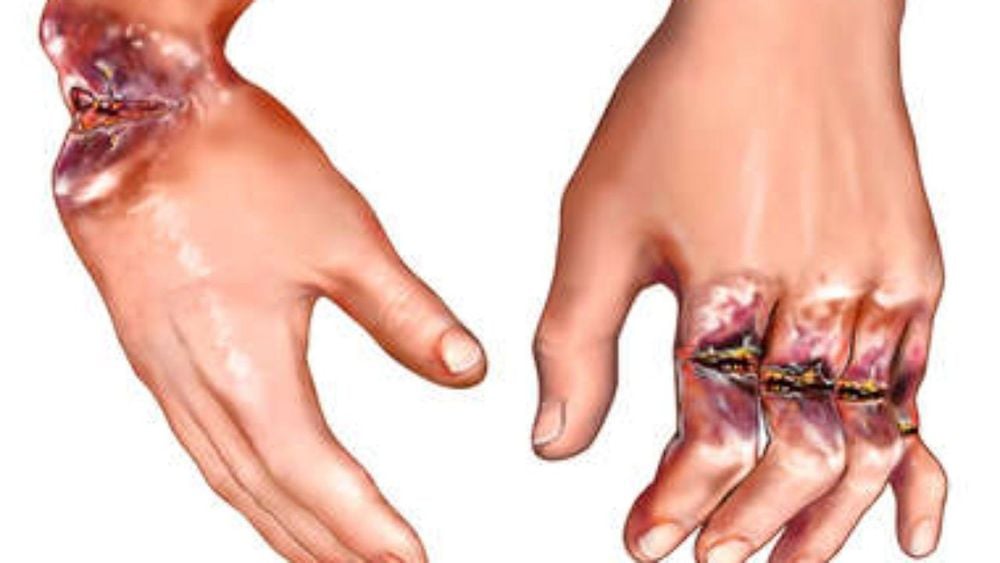
Trực tiếp bị chấn thương gây tổn thương nghiêm trọng dẫn đến hội chứng vùi lấp
2. Pathophysiology
Compression injuries can persist and put pressure on muscle tissue. Its secondary lesions cause the inclusion syndrome. Mechanisms leading to manifestations of burial syndrome:Ischemic reperfusion (when pressure is released from the crushed limb) is the main mechanism of muscle injury in the crush syndrome. There is rhabdomyolysis due to trauma. Muscle damage causes large amounts of potassium, phosphate, myoglobin, creatine kinase, and urate to leak into the circulation. Myoglobin plasma concentrations are usually very low. If a significant amount of skeletal muscle is damaged (>100 g), excess myoglobin is filtered by the kidneys and can cause tubular obstruction and kidney damage: excess myoglobin is nephrotoxic.
Intravascular volume depletion and decreased renal perfusion, combined with myoglobinuria, lead to renal dysfunction.
Burial syndrome is characterized by:
Hypovolemic shock (due to water sequestration in injured muscle cells). Hyperkalemia (cellular release of potassium by injured muscle cells). This can also lead to:
Metabolic acidosis (cellular release of phosphates and sulfates by injured muscle cells). Acute kidney injury. Disseminated intravascular coagulation (DIC).
3. Symptoms of buried syndrome
The main clinical features of the buried syndrome are:Mass trauma to skeletal muscle. Sensory and motor disturbances in extremities that are compressed, which then become stretched and swollen. The limb/body part may not have a pulse. Myoglobinuria and/or hemoglobinuria, which can cause urine to appear reddish brown. Oliguria may be present with severe hypovolemic shock. Nausea, vomiting, confusion and agitation may occur as a result of disturbances in water, electrolytes, acid-base balance in the body; urea, creatinine, uric acid, potassium, phosphate and creatine kinase are elevated. There may also be hypocalcemia.
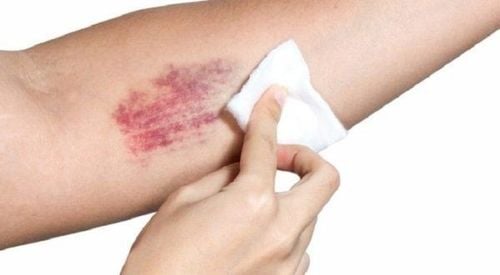
Các vết bầm tím xuất hiện ở hội chứng vùi lấp
4. Treatment of buried syndrome and initial management
If not treated promptly, the mortality rate of buried syndrome is very high. The most important measure that can be taken to reduce mortality in such situations is to initiate treatment immediately. However, traditional treatments such as intravenous fluids, diuretics, and hemodialysis are not feasible enough to perform at the disaster site. Therefore, basic first aid is very important.The patient must be appropriately evaluated, classified by severity for timely emergency: Assess breathing, circulation. Monitor vital signs and oxygen saturation levels.
Oxygen delivery through a non-renewable mask. Assess the limbs using the '5 Ps' of acute limb ischemia - pain, dysesthesia, paralysis, pallor and lifelessness - to estimate the extent of ischemic injury. Attention should be paid to life-threatening injuries. Establishing an intravenous line should be done as soon as possible, ideally before the trapped limb is released and decompressed. Stabilize body temperature. Before release, consider arterial tourniquet if pressure has not been given for 30 minutes. Apply the garnish if the compression has lasted for more than 30 minutes. In adults, a saline infusion of 1,500 ml/hour should be initiated during extraction. Early, vigorous water intake (≥10 liters/day) helps preserve kidney function. Because of the very high risk of acute kidney injury, catheterization is recommended at an early stage and urine output is monitored. Because of the need to maintain fluid balance, it is necessary to place a central venous line (if conditions permit). Analgesic. In buried syndrome, analgesia with Entonox is preferred, which may be preferable to intravenous or oral analgesia because of the risk of hypotension. However, it is difficult to find in the domestic market.
5. Testing
Overall testing should be done: Liver function, kidney function, Total coagulation function, electrolytes, calcium, phosphate, Creatine kinase (CK) (rhabdomyolysis is defined as total creatine kinase level higher than normal) 5-10 times in patients with typical symptoms and/or risk factors creatine kinase levels peak within 24 hours and then decrease by approximately 30-40% per day. If levels continue to rise, consider ongoing muscle injury or compartment syndrome)Uric acid (may increase).
Blood gas
Myoglobulinuria
Electrocardiogram. Injury screening by whole-body CTscan...
Assess compartment pressure.
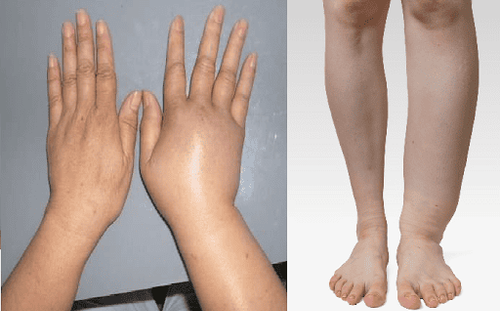
Cơ thể bị rối loạn nước điện giải do tích tụ nước trong cơ thể người bệnh
6. Follow more
In addition to important monitoring with specific indications for each specific patient, some additional notes in monitoring and treating patients with buried syndrome:Urine output should be maintained at 300 ml /hour until myoglobinuria is gone. Mannitol-alkaline diuresis may help protect the kidneys from myoglobin damage and may reduce the risk of hyperkalemia. Mannitol protects the kidneys by enhancing renal perfusion and may also reduce muscle injury. Alkalizing the urine with sodium bicarbonate may help prevent acute kidney injury. Hyperkalemia will need to be treated. Hypocalcemia generally does not require treatment. Kidney dialysis may be needed. Disseminated intravascular coagulation will require treatment with fresh frozen plasma, cryoprecipitate, and platelets.
7. Surgery
Placed when indicated. Amputation of crushed limbs may be required. Early amputation can prevent buried syndrome.8. Complications of burying syndrome
Hyperkalemia and infection are the most common causes of death. Hyperkalemia can lead to arrhythmias and cardiac arrest. Infection is a major cause of death in disaster areas. Acute kidney injury may occur.9. Prognosis
Adequate timely translation support improves prognosis. Being buried under rubble for a long time dehydrates and is therefore susceptible to kidney damage.The time spent under the rubble did not have much of an effect on the prognosis, some suggest, possibly because survivors were less injured. It is recommended that the rehabilitation of survivors continue for at least five days.
Mortality from burial syndrome depends on the extent of the disaster and factors that can affect survival, such as impeded rescue and transportation, damaged medical facilities demolition, with or without complex treatment options and construction methods of collapsed buildings.
10. Prevention of burying syndrome
In any major disaster, appropriate triage must be made to identify those that need urgent attention. This can have a marked effect on morbidity and mortality.Early and adequate fluid resuscitation reduces the risk of acute kidney injury in the inclusion syndrome.
In acute kidney injury, peritoneal dialysis can save lives.
Any early medical intervention is especially important for the health and recovery of the person with buried syndrome. Rapid response to disasters, adequate medical supplies are important, this is provided by the size of the country and region.
Please dial HOTLINE for more information or register for an appointment HERE. Download MyVinmec app to make appointments faster and to manage your bookings easily.






